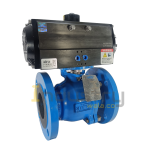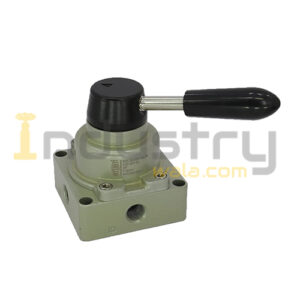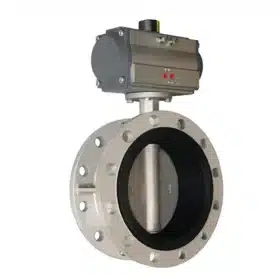Aira 2YES Pneumatic Actuator Operated Ball Valve Flange End Class 150#
Make- Aira
Model- 2YES
Body- WCB / CF8 / CF8M
Ball- CF8 / CF8M
Seal- PTFE
Working Pressure- 10Kg/cm2
Temperature- Upto 180C
Leakage Class- Class VI
Media- Air, Water, Oil, Gas and Steam
Price range: ₹5,106 through ₹23,552 Exclusive GST
Operating principle of Pneumatic Actuated Ball Valve
The most common mechanism for a pneumatic actuator for ball valves is the rack and pinion mechanism. This comprises of the rack (a linear gear) and the pinion (a circular gear). The rack is attached to a piston which is pushed by compressed air to achieve linear motion. This linear motion is converted to circular motion by the pinion. The pinion drives the stem of a ball valve to open and close positions.
To control the pneumatic actuator for ball valves, the compressed air is regulated by solenoid valves. Electrical signals from the controller energize the solenoid valve to either open or close positions allowing compressed air to flow through to both piston sides of the pneumatic actuator. The piston pushes the rack which turns the pinion connected to the stem of the ball valve.
| SIZE | |
|---|---|
| Operation Type | |
| MOC |
5 reviews for Aira 2YES Pneumatic Actuator Operated Ball Valve Flange End Class 150#
 Aira 2YES Pneumatic Actuator Operated Ball Valve Flange End Class 150#
Aira 2YES Pneumatic Actuator Operated Ball Valve Flange End Class 150#






Aira 2YES is one of the best pneumatic actuator ball valves we’ve used. Strong body, easy to operate, and zero maintenance required. Excellent product from Aira!
We’ve been using this valve for a few months — it’s sturdy, leak-proof, and very efficient. Perfect for both air and liquid flow control applications.
Solid build quality with a responsive pneumatic actuator. The ball valve operates quietly and efficiently. A reliable product for fluid control systems.
Very durable and smooth-operating valve. The Class 150# flange connection ensures tight sealing and easy installation. Aira has maintained great engineering standards.
The Aira 2YES pneumatic ball valve is excellent in both quality and performance. The flange end design fits perfectly, and the actuator works flawlessly. Highly recommended for industrial use!